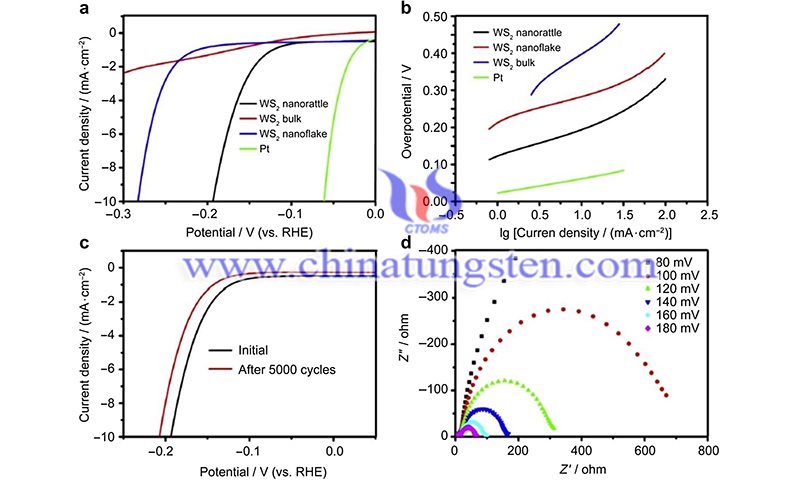Controlled Synthesis of Tungsten Disulfide Nanomaterials
- Details
- Category: Tungsten Information
- Published on Thursday, 25 August 2022 16:28
1T-WS2 structure and 2H-WS2 structure of tungsten disulfide nanomaterials controlled synthesis is important. The 1T-WS2 structure is considered an efficient co-catalyst for hydrogen evolution due to the increased density of catalytic active sites and the metal conductivity, while the 2H-WS2 structure can be used as a visible photosensitizer. Therefore, various synthetic methods for the crystalline phase modulation of WS2 have received much attention. Since the conversion from 1T-WS2 to stable 2H-WS2 can be easily achieved by annealing, the study of feasible methods to achieve the opposite conversion has received much attention.
The lithium intercalation hydrothermal method is an important wet chemical method to achieve the conversion of the 2H phase to the 1T phase. This method uses alkali metal (lithium) to enter the bulk 2H-WS2 layer and then reacts with water to form a large amount of hydrogen gas to achieve WS2 stripping, producing 1T-WS2 in the process.

The researchers found that products prepared at room temperature had a low lithium-ion content, resulting in insufficient peeling. Heating can increase the lithium-ion content and thus the stripping efficiency. However, most such exfoliated WS2 showed low stability (complete conversion of lithium-ion exfoliated 1T-WS2 to 2H-WS2 was observed after one and a half months) and a mixture of 1T and 2H phases.
To solve the above problems, Liu et al. reported stable metal 1T-WS2 nanoribbons intercalated with ammonia ions, and the samples did not change for more than six months, indicating good stability. Another wet chemical method to solve the above two problems is the colloidal controlled synthesis method, which can achieve the controlled fabrication of a stable crystalline phase of WS2.
For example, Mahler et al. prepared colloidally stable WS2 monolayers with distorted 1T structures by controlling the reactivity and reaction time of tungsten precursors. So far, much attention has been focused only on liquid-based approaches to achieve crystalline phase modulation, and some other strategies should also be explored.
Due to the anisotropic nature of WS2 nanostructures, the effect of different morphologies on the properties is significant. The use of different strategies to synthesize WS2 with specific morphologies and to investigate the growth mechanisms controlling the WS2 morphology have gained much attention. Three main morphologies, including nanosheets, intermediate frequency WS2, and NT-WS2, have been widely studied due to their good physical and chemical properties.

Article Source: Sun, CB., Zhong, YW., Fu, WJ. et al. Tungsten disulfide nanomaterials for energy conversion and storage. Tungsten 2, 109–133 (2020).
- Tungsten Manufacturer & Supplier, Chinatungsten Online: www.chinatungsten.com
- Tungsten News & Prices of China Tungsten Industry Association: www.ctia.com.cn
- Molybdenum News & Price: news.molybdenum.com.cn
- Tel.: 86 592 5129696; Fax: 86 592 5129797; Email: sales@chinatungsten.com



 sales@chinatungsten.com
sales@chinatungsten.com